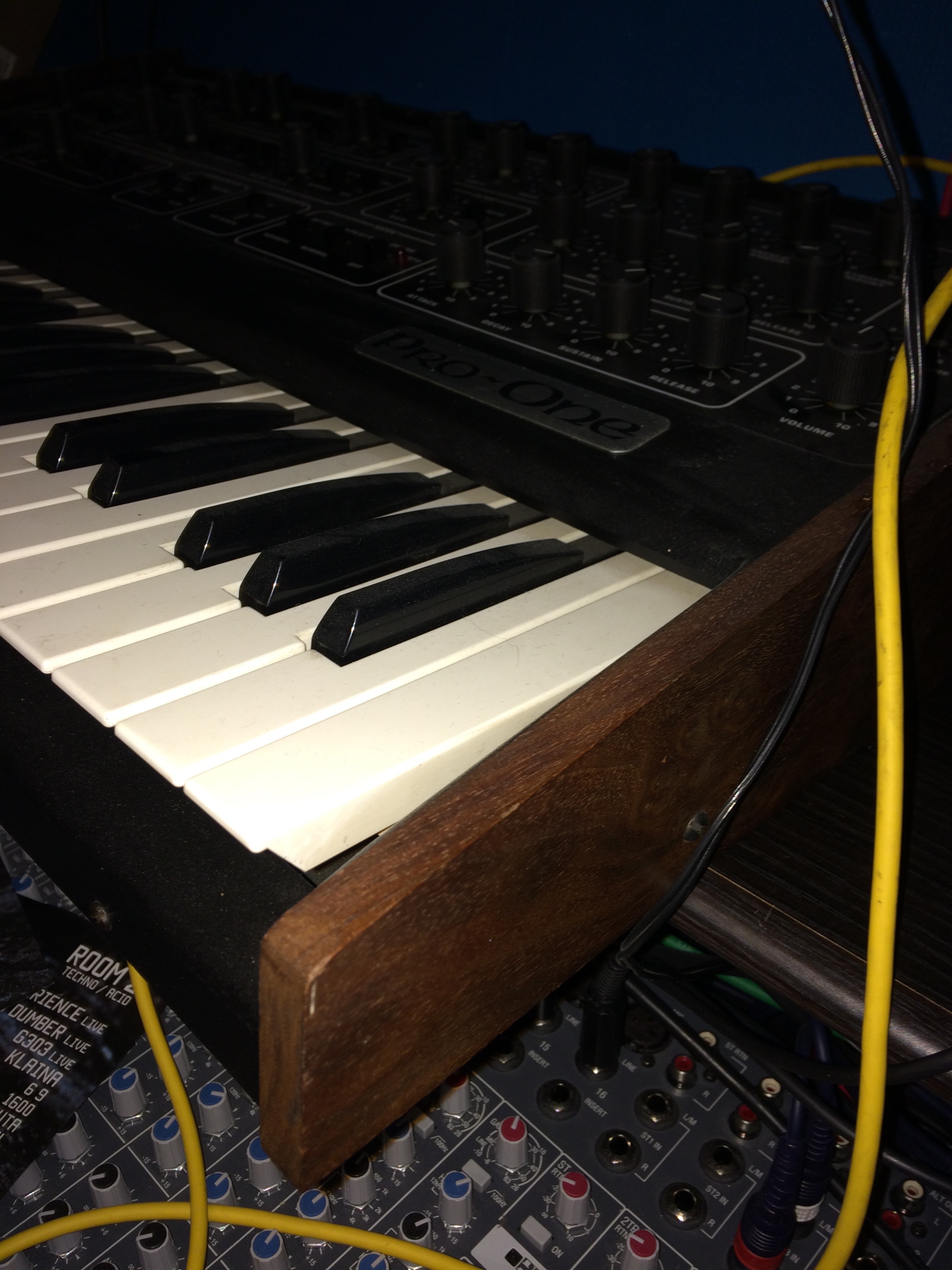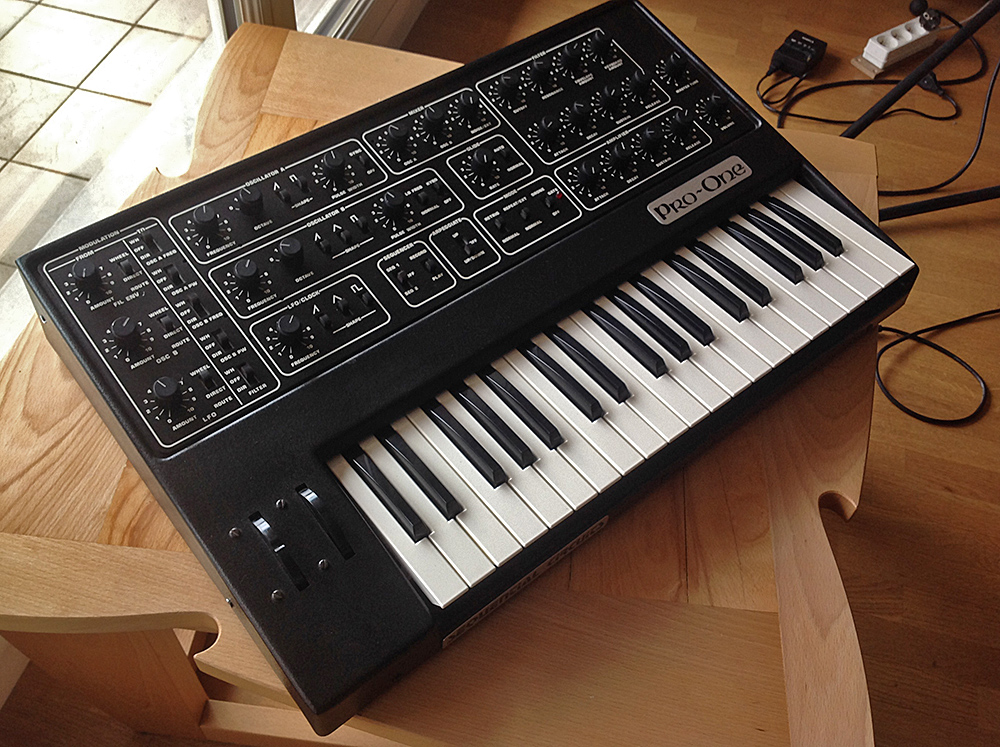
The additional notes are generated by dividing down the outputs of these oscillators.

Using an octave divider a synthesizer needs only 12 oscillators - one for each note in the musical scale. It uses octave divider technology to generate polyphony, and about 1,000 Novachords were manufactured until 1942. Novachord by Hammond Organ Company, released in 1939, is a forefather product of frequency divider organs and polyphonic synthesizer. Harald Bode's Warbo Formant Orguel, developed in 1937, was an archetype of a voice allocation polyphonic synthesizer. The earliest polyphonic synthesizers were built in the late-1930s, but the concept did not become popular until the mid-1970s.

Monophonic synthesizers with more than one oscillator (such as the ARP 2600) can often be patched to behave in a paraphonic manner, allowing for each oscillator to play an independent pitch which is then routed through a common VCF and VCA. For example, playing a new note on top of notes already held might retrigger the volume envelope for the entire sound. The result is a synthesizer that can play chords, provided all the notes start and end at the same time ( homophony). Paraphonic synthesizers, such as the Solina String Ensemble or Korg Poly-800, were designed to play multiple pitches at the same time by using multiple oscillators, but with a common filter and/or amplifier circuit shared among all the voices. When only one key is pressed, both oscillators are assigned to one note, possibly with a more complex sound. When two or more keys are pressed simultaneously, the lowest- and highest-note will be heard. These synthesizers have at least two oscillators that are separately controllable, and a duophonic keyboard that can generate two control voltage signals for the lowest- and highest-note. Well-known monosynths include the Minimoog, the Roland TB-303, the Korg Prophecy, and the Korg Monologue.ĭuophonic synthesizers, such as the ARP Odyssey and Formanta Polivoks built in the 1970s and 1980s respectively, have a capability to independently play two pitches at a time. This does not necessarily refer to a synthesizer with a single oscillator the Minimoog, for example, has three oscillators which are settable in arbitrary intervals, but it can play only one note at a time.
#Sequential circuits pro one monophonic or polyphonic generator
The internal Gate Generator triggers filter and amplifier envelope generators as soon as external audio signals exceed a set threshold value.See also: Synthesizer Monophonic Ī monophonic synthesizer or monosynth is a synthesizer that produces only one note at a time, making it smaller and cheaper than a polyphonic synthesizer which can play multiple notes at once.

The external audio input with preamp is highly interesting for running guitar, keyboards, vocals and other audio signals into the Pro-One. The character of the Pro-One is harsh, raw, and aggressive, and its scope is fairly wide: From punchy bass (at least at low resonance settings), screaming leads, biting brass, and far-out effects (thanks to the two LFOs on board) to snappy electronic percussion sounds, everything is available at the flick of a switch (or two).ĭue to its inherent complexity and its purely electronic timbral character, the Pro-One recommends itself for applications within thoroughbred electronic music. The keyboard of this very example – the Achilles heel of all Pro-Ones – was completely refurbished and plays nicely. This synthesizer is equipped with some excellent performance tools: For starters, there is a sequencer (which can store up to 40 notes), an arpeggiator, pitch and modulation wheels (the works), adjustable glide, and single or multiple triggering.

The heart and soul of the Pro-One is its extremely rewarding modulation matrix which turns the Pro-One into a universal tool for any musician who wants to go astray and indulge in a little bit of experimentalism: Three sources (filter envelope generator, VCO B, LFO) can be assigned to five destinations (VCO A, VCO A pulse-width, VCO B, VCO B pulse-width, VCF frequency) – going the direct way, or controlled by the setting of the Modulation wheel to the left of the keyboard. The instrument is equipped with the usual sound-generating and sound-shaping component parts (two oscillators, a noise source, voltage-controlled filter, LFO, and two envelope generators) but their feature set leaves nothing to be desired: waveforms can be activated simultaneously, oscillators can be synced to each other, VCO 2 can function as an optional second LFO, there are three LFO waveshapes, filter tracking is continuously variable etc. In terms of sound, the Pro-One more or less resembles a later-generation Prophet-5 since the Prophet-5 as well as the Pro-One are based on the same set of Curtis ICs. Essentially, its layout is based on the same architecture as Sequential's legendary five-voice polyphonic synth, the Prophet-5. The Pro-One is one of the most versatile monophonic synthesizers in the world.


 0 kommentar(er)
0 kommentar(er)
